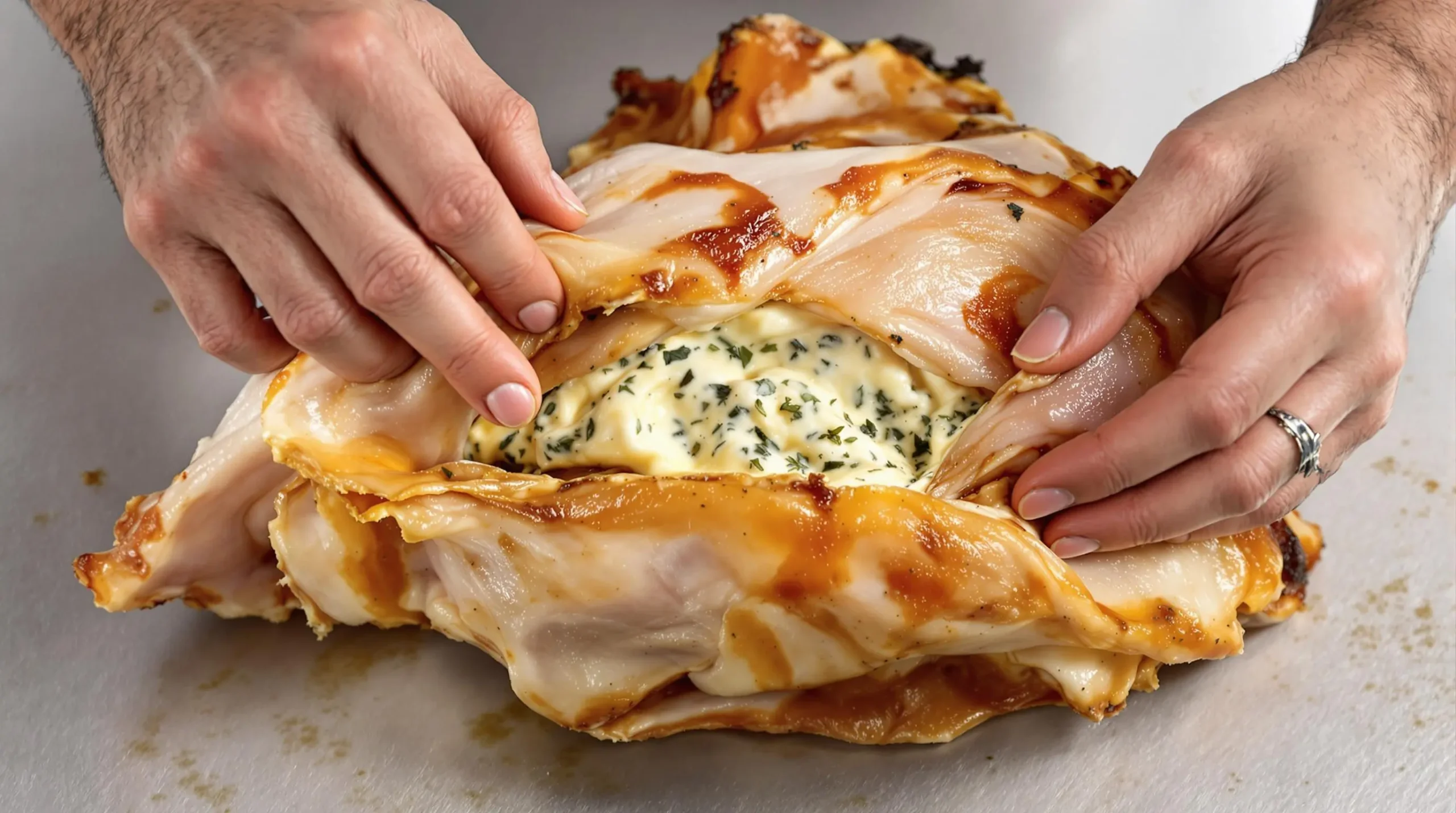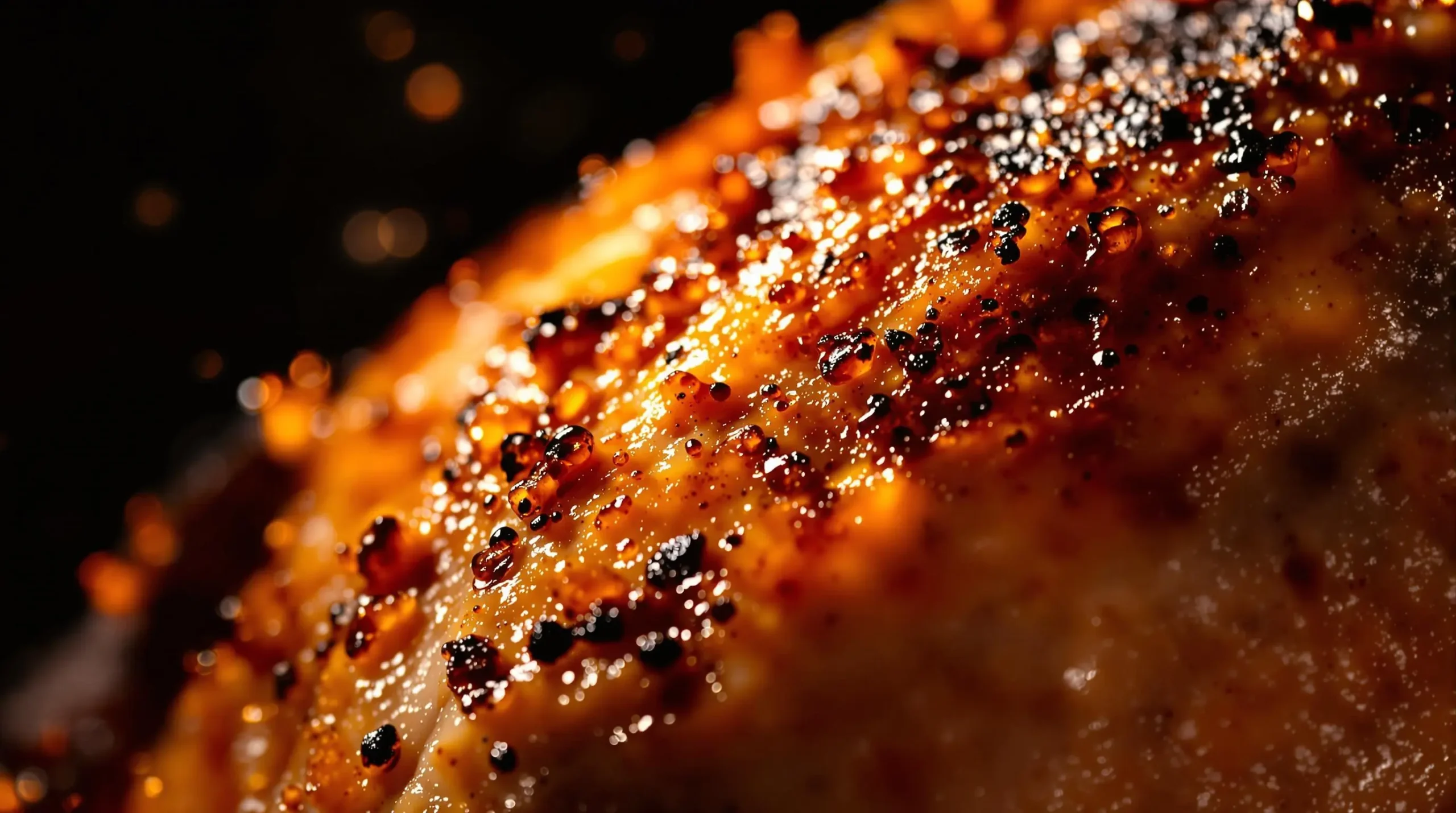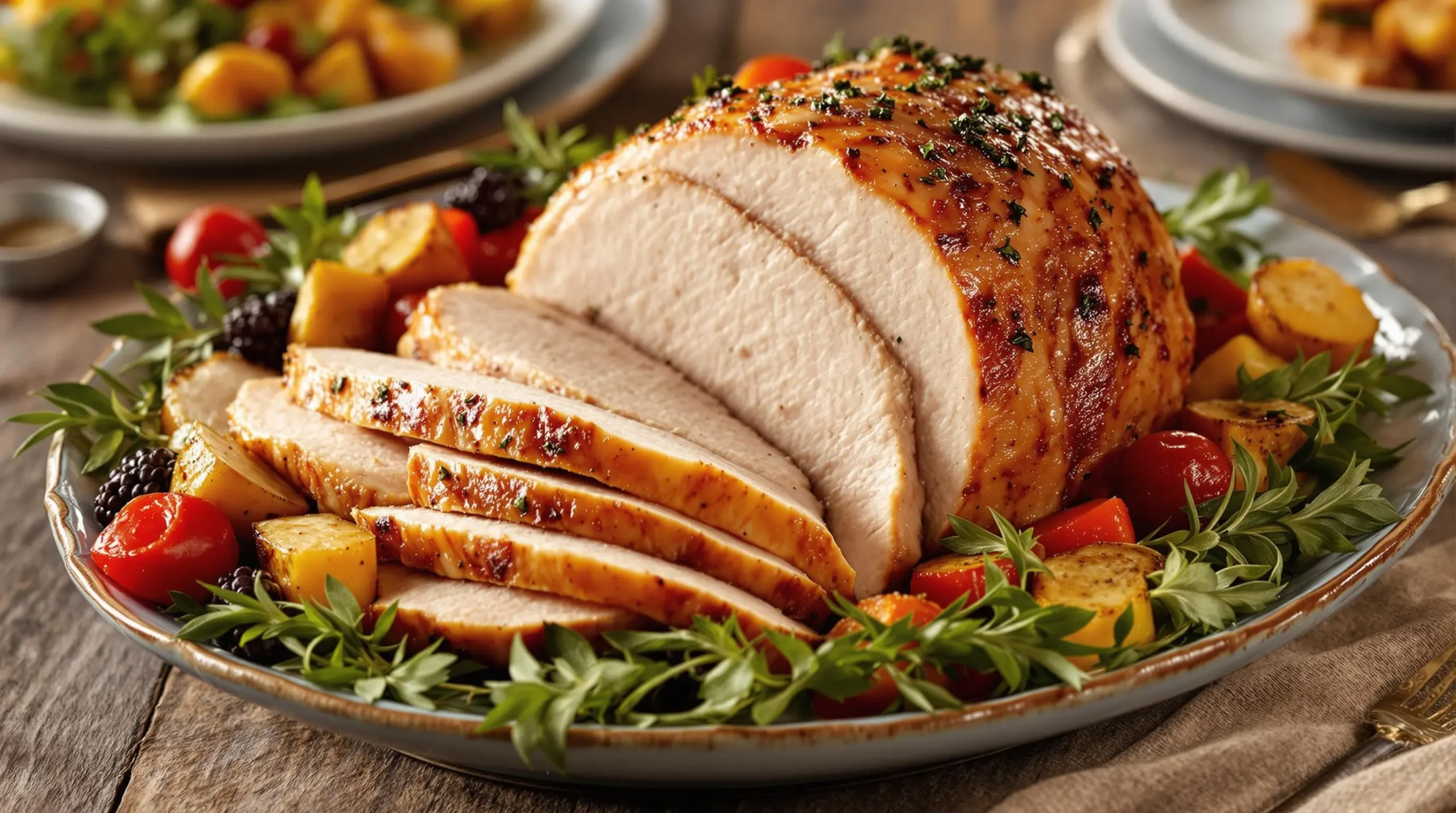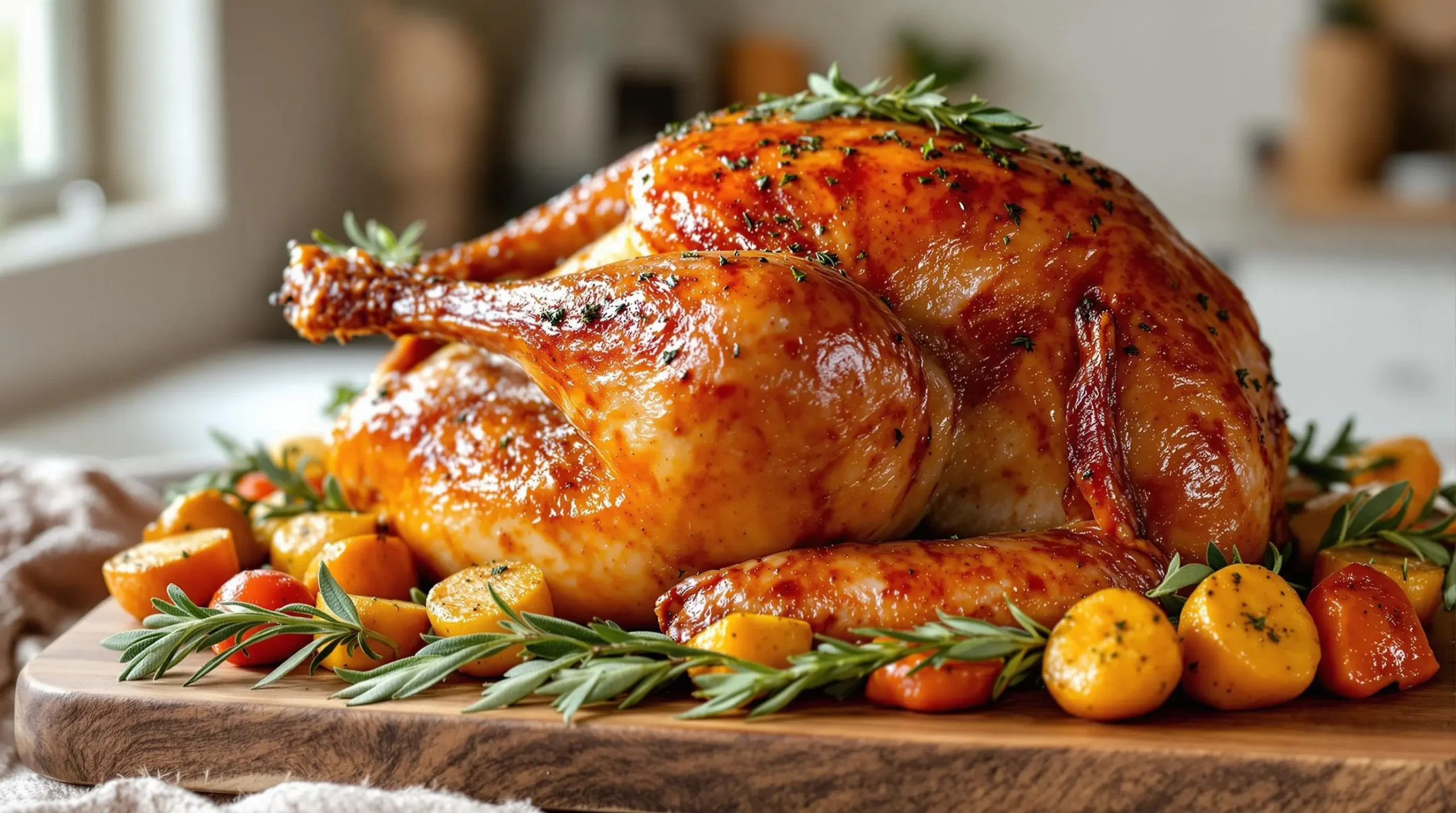There’s something deeply satisfying about transforming a hard-earned wild turkey into a memorable meal. Whether you’re a seasoned hunter or just received your first bird, finding the perfect wild turkey recipe can turn this game meat into a showstopping dish that rivals any store-bought alternative.
Unlike their domestic cousins, wild turkeys offer a unique culinary experience. The meat carries a more complex flavor profile, telling the story of their free-ranging lifestyle. Each wild turkey recipe needs to be carefully crafted to complement this distinct taste while ensuring the lean meat stays tender and juicy. Moreover, harvesting and cooking wild game represents one of the most sustainable ways to put food on your table.
In this guide, you’ll discover everything from essential preparation techniques to time-tested cooking methods. We’ll explore how to properly clean and brine your bird, master temperature control, and create flavorful marinades that enhance the natural taste. Additionally, you’ll learn the secrets to achieving that perfect golden-brown skin while keeping the meat moist.
From traditional roasting methods passed down through generations to modern techniques like smoking and sous vide, we’ll cover approaches that suit both novice cooks and experienced chefs. Whether you’re planning a special holiday meal or wanting to make the most of your spring harvest, these recipes and tips will help you create dishes that honor the wild turkey’s unique character.
Let’s start by looking at the essential preparation steps that set the foundation for any successful wild turkey dish.
Preparing Wild Turkey for Cooking
The journey to a perfect wild turkey recipe begins long before the bird hits the heat. Proper preparation sets the foundation for success, ensuring your hard-earned harvest reaches its full potential on the plate.
Proper Cleaning and Storage
First and foremost, careful field dressing is crucial. Start by removing the entrails cleanly, then thoroughly rinse the cavity with cold water. Pat the bird dry with paper towels, being especially mindful of any remaining feathers or debris. For optimal results, keep your turkey cold – ideally between 34-38°F – immediately after cleaning.
Storage considerations are equally important for any wild turkey recipe. If you’re planning to cook within 2-3 days, simply wrap the bird in plastic and store it in the refrigerator. However, for longer storage, vacuum seal portions and freeze them at 0°F or below. Many hunters swear by aging their birds for 3-5 days in controlled conditions, which can enhance tenderness and develop deeper flavors.
Brining Techniques
Brining is perhaps the most crucial step in preparing wild turkey. Unlike their domestic counterparts, wild turkeys are notably leaner, making them prone to drying out during cooking. A proper brine helps lock in moisture while adding flavor throughout the meat.
For a basic brine, mix:
- 1 gallon cold water
- 1 cup kosher salt
- ½ cup brown sugar
To elevate your wild turkey recipe, consider adding:
- Fresh herbs (thyme, rosemary, sage)
- Crushed garlic cloves
- Whole peppercorns
- Bay leaves
- Citrus slices
Submerge your turkey for 12-24 hours, depending on size. For smaller portions like breasts, 8-12 hours usually suffices. Remember to keep the turkey refrigerated throughout the brining process.

Essential Equipment
Success in the kitchen starts with having the right tools. For wild turkey preparation, you’ll need:
Basic Equipment:
- Sharp boning knife
- Large cutting board
- Heavy-duty kitchen shears
- Brining container or bag
- Paper towels
Cooking Essentials:
- Roasting pan with rack
- Meat thermometer
- Large platter for resting
- Kitchen twine for trussing
Temperature monitoring is particularly important when cooking wild game. Invest in a reliable meat thermometer – preferably one with a probe that can stay in the bird while cooking. This allows you to monitor the internal temperature without repeatedly opening your oven or smoker, helping maintain consistent cooking conditions.
By following these preparation steps and ensuring you have the right equipment on hand, you’ll be well-positioned to tackle any cooking method you choose. Remember, proper preparation might take extra time, but it’s an investment that pays off in the final result.
Classic Wild Turkey Recipes
After proper preparation, it’s time to explore some time-tested methods that bring out the best in your wild turkey. These classic wild turkey recipes have stood the test of time, proving themselves worthy of your prized game bird.
Roasted Wild Turkey
Nothing beats the aroma of a perfectly roasted wild turkey filling your kitchen. Start by patting the brined bird completely dry – this crucial step helps achieve that coveted golden-brown skin. Next, create a flavorful compound butter using:
- 1 stick softened butter
- 2 tablespoons fresh herbs (sage, thyme, rosemary)
- 2 minced garlic cloves
- Zest of one lemon
Gently work this butter mixture under the skin, paying special attention to the breast meat. For stuffing, keep it simple with quartered onions, celery, and citrus slices to add moisture without overpowering the natural flavors.
Temperature control makes or breaks this wild turkey recipe. Start at 425°F for 30 minutes to develop color, then reduce to 325°F for the remaining cook time. Most importantly, resist the urge to frequently open the oven door. Instead, use your probe thermometer to monitor progress until the breast reaches 165°F.
Wild Turkey Schnitzel
This versatile preparation method works wonders with wild turkey breast meat. Begin by butterflying the breasts and gently pounding them to an even ¼-inch thickness between two pieces of plastic wrap. Subsequently, season both sides with salt and pepper.
Set up your breading station with:
- Seasoned flour
- Beaten eggs with a splash of milk
- Seasoned breadcrumbs mixed with grated parmesan
Dip each piece first in flour, then egg wash, and finally breadcrumbs, pressing gently to ensure even coating. For the crispiest results, let the breaded cutlets rest in the refrigerator for 30 minutes before frying.
Heat oil in a large skillet to 350°F – use a cooking thermometer for accuracy. Fry each piece for 3-4 minutes per side until golden brown and cooked through.
Slow-Cooked Wild Turkey
Perfect for tougher cuts or older birds, slow cooking transforms challenging pieces into tender, flavorful meals. Start with a robust marinade consisting of:
- Apple cider
- Olive oil
- Worcestershire sauce
- Garlic and onion
- Your favorite herbs
Let the meat marinate overnight, then place it in your slow cooker with fresh aromatics and enough liquid to cover halfway. Cook on low for 6-8 hours, or until the meat easily pulls apart with a fork.
For sauce options, consider classic gravy enriched with the cooking liquid, or try something different like a mushroom cream sauce or herb-infused pan reduction. Remember, the key to any successful wild turkey recipe is patience – allow time for flavors to develop and meat to become tender.
Modern Cooking Methods
Today’s kitchen technology offers exciting new ways to prepare wild turkey, combining traditional flavors with innovative techniques. These modern approaches can help even novice cooks achieve consistently excellent results with their wild turkey recipe adventures.
Sous Vide Wild Turkey
Sous vide cooking has revolutionized how we prepare lean game meats. This precise temperature control method ensures perfectly cooked turkey every time. For a basic wild turkey recipe using sous vide, follow these guidelines:
Temperature Settings:
- Breast meat: 145°F for tender, juicy results
- Dark meat: 155°F for optimal texture
- Wings and legs: 165°F for fall-off-the-bone tenderness
Set your sous vide circulator to the desired temperature. Season the meat with salt, pepper, and herbs, then seal in vacuum bags. Cooking times vary by cut:
- Breast portions: 4-6 hours
- Whole breasts: 6-8 hours
- Dark meat: 8-12 hours
After cooking, pat the meat dry and finish with a quick sear in a hot cast-iron skillet to develop a golden crust.
Grilling and Smoking
Smoking adds depth and complexity to wild turkey, while grilling offers a quicker cooking option with fantastic results. First, select your wood chips carefully:
- Apple wood: Mild, sweet flavor
- Hickory: Rich, traditional taste
- Cherry: Subtle fruit notes
- Maple: Gentle sweetness
For smoking, maintain a steady temperature between 225-250°F using your digital smoker thermometer. Place the turkey breast-side up and expect about 30-40 minutes per pound. Meanwhile, for grilling, use indirect heat at 350°F, with the meat placed away from direct flames.
Baste every hour with:
- Melted butter
- Apple juice
- Your favorite herbs
- Mild cooking oil
Specialty Preparations
Modern wild turkey recipe innovations often focus on unique preparation methods. Butterflying, for instance, creates an even thickness for consistent cooking. To butterfly:
- Remove the breastbone
- Split the breast horizontally
- Open like a book
- Pound gently to even thickness
For stuffed breast recipes, consider fillings like:
- Wild mushroom and herbs
- Cornbread and sage
- Apple and onion mixture
- Spinach and garlic
Quick-cooking methods work well for smaller portions. Try:
- Pan-searing cutlets (3-4 minutes per side)
- Stir-frying strips (2-3 minutes total)
- Grilling medallions (4-5 minutes per side)
Remember to let the meat rest after cooking, typically 5-10 minutes for smaller pieces and 15-20 minutes for larger portions. This crucial step helps retain moisture and ensures the juiciest results possible.
These modern methods offer reliable ways to prepare wild turkey while maintaining its natural flavors. Whether you choose sous vide for precision, smoking for depth, or quick-cooking for convenience, each technique brings something special to your wild game cooking arsenal.

Frequently Asked Questions
After exploring various wild turkey recipes and techniques, you might still have some burning questions. Here are the most common queries we receive about preparing wild turkey:
How do I prevent wild turkey from becoming dry?
The key to moist wild turkey lies in proper preparation and cooking. Start with brining – this helps the meat retain moisture during cooking. Additionally, using a meat thermometer prevents overcooking, which is often the main culprit behind dry meat. Consider using cooking methods that add moisture, such as basting or braising, for your next wild turkey recipe.
What’s the ideal internal temperature for wild turkey?
For food safety and optimal taste, follow these temperature guidelines:
- Breast meat: 165°F
- Dark meat: 165-175°F
- Ground turkey: 165°F
Always let the meat rest for 15-20 minutes after cooking. During this time, the temperature will rise slightly, and the juices will redistribute throughout the meat.
How long can I store wild turkey?
Storage times vary depending on the method:
- Fresh (refrigerated): 2-3 days
- Frozen (vacuum-sealed): up to 6 months
- Frozen (wrapped): 3-4 months
- Cooked leftovers: 3-4 days refrigerated
What’s the best way to season wild turkey?
Keep seasonings simple to complement the natural flavor. Start with:
- Salt and black pepper
- Fresh herbs (sage, thyme, rosemary)
- Garlic and onion
- Butter or oil-based marinades
For stronger flavors, try:
- Dry rubs with paprika and herbs
- Citrus-based marinades
- Wine or cider-based brines
Remember to season gradually and taste as you go. Unlike domestic turkey, wild turkey has a distinct flavor that shouldn’t be overwhelmed by heavy seasoning.
By keeping these answers in mind, you’ll be better equipped to handle any challenges that arise while preparing your wild turkey. Whether you’re trying a new recipe or perfecting an old favorite, these guidelines will help ensure success in your wild game cooking adventures.
Bringing It All Together: Your Wild Turkey Success
After exploring these various wild turkey recipes and techniques, you’re now equipped with the knowledge to transform your wild game into memorable meals. The journey from field to table requires attention to detail, but the results are well worth the effort.
Remember, successful wild turkey preparation hinges on three fundamental principles. First, proper cleaning and storage lay the groundwork for any great dish. Second, brining proves essential for maintaining moisture in this naturally lean meat. Finally, careful temperature control throughout the cooking process ensures optimal results, regardless of your chosen method.
Moreover, don’t be afraid to experiment with different cooking techniques. While traditional roasting delivers reliable results, modern methods like sous vide or smoking can elevate your wild turkey recipe to new heights. Each approach offers unique advantages, from the precise temperature control of sous vide to the rich, complex flavors developed through smoking.
For beginners, start with straightforward preparations like schnitzel or simple roasting. As your confidence grows, venture into more advanced techniques. Keep notes about what works best for you, and don’t get discouraged if your first attempts aren’t perfect – even experienced cooks occasionally face challenges with wild game.
Most importantly, remember that cooking wild turkey connects us to age-old traditions while allowing for modern innovation. Whether you’re preparing a holiday feast or a weekday dinner, these recipes and techniques help honor both the animal and the effort that went into harvesting it.

By following these guidelines and trusting your instincts, you’ll soon master the art of wild turkey preparation. Each meal becomes an opportunity to celebrate sustainable food practices while creating dishes that your family and friends will remember for years to come.

